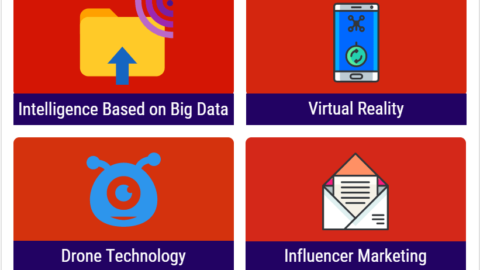The Ins And Outs Of Digital Experience Management
Digital experience management is a relatively new concept that has been emerging in recent times. It is a part of the digital marketing strategy but differs from other digital marketing channels in many different ways. Digital customer experience management plays a vital role in the way companies such as technology consulting and services operate today. It’s in the spotlight with marketing, sales, and customer success teams. But what exactly is digital experience management and how to use digital experience platform for your benefit? Also how to establish digital experience team.
Table of Contents
What is Digital Experience Management?
Digital experience management is a strategic approach to improving customer experience by using technology. It enhances the customer experience by using digital marketing channels in the right way. Digital experience management and digital marketing are very much interrelated. It’s all about the customer experience. Digital marketing is a way to reach out to your customers.
It is a combination of several concepts, including customer experience management, business process management, and enterprise architecture.
The goal of experience management is to maximize customer satisfaction and engagement while minimizing costs and risks. This is taken care of by a digital experience team.
Who Is a Digital Experience Team and What Do They Do?
The Digital Experience Team is the point of contact between digital and traditional marketing channels. This team is responsible for all digital experiences – from the website to the mobile app, and they’re all connected.
This team must be willing to work closely with the web design agency, digital marketing agency, and even the marketing department. The success of this team in delivering a good user experience will lay the foundation for digital marketing success.
Digital Experience Team differs in its approach to other marketing team members and it also depends on the size of the business. The Digital Experience Team isn’t just a group of people but it’s a team of people that harmoniously work together to achieve the most profitable business growth.
They are all experts in their respective fields and that’s why they can make the most of their individual skills in order to create a truly outstanding digital marketing strategy. The Digital Experience Team is made up of people from different backgrounds, departments, and geographic locations.
What are the Benefits of DXM?
Digital experience management (DXM) is a strategic and coordinated approach to management. It is the digital equivalent of an overall experience management strategy.
So, the approach is a way to manage the customer experience through the entire digital ecosystem throughout the customer journey. It is the art and science of managing marketing by combining business strategy, technology, and design.
And also it is about managing a customer’s experience across all channels, touchpoints, and devices. It is about being consistent and synchronous. Just like customer experience management, it is not a set of tactics and technologies. It is a strategic framework that shapes the customer experience.
Several elements contribute to the user experience, including the following:
Is the touchpoint available when the user requests it?
User flow: Is the user able to accomplish what they set out to do? Was their mission a success?
Usability: Are required functions easily accessible?
Is the interaction as fluid and quick as feasible, or does the user always have to wait to accomplish their objective?
Is the user unable to engage with the touchpoint due to any problems or damaged components?
Monitoring digital experiences has become crucial for businesses to keep a competitive edge. Just like a store owner wants to know whether their consumers are having trouble finding a product or navigating the store, proprietors of digital services want to understand their users’ pain points as they traverse their offers.
One advantage of digital engagement over physical interaction is the availability of tools and technology for monitoring and perhaps improving the user experience.
What Fails a Digital Experience Management?
The following are some reasons why user experiences might fail.
1. Failure of a Digital Touchpoint:
This is the difficult failure. Nothing is more infuriating than a well-designed digital touchpoint going offline. When all services were supplied directly from your hosted data centers, identifying an outage was easy. However, cloud transformation significantly complicates determining the root cause of a failure, since outages can be caused by your cloud provider, a third party assisting with tailored experiences, your content delivery network (CDN), and a variety of other services you may be utilizing.
2. Incompatibility With a Critical User Path in a Digital Experience Management Platform:
Another apparent example is a problem with an e-commerce store‘s checkout funnel. Consider this example from the automobile insurance sector as a variation on that scenario.
Nowadays, every auto insurance provider has a smartphone application. The software should aid users in extremely unusual circumstances, such as a vehicle accident or the need for roadside assistance. Everything must perform flawlessly during these vital periods – no excuses. If the software fails to deliver on the user’s most difficult day of the year, they will remember. When the “contact agent” capability causes the app to white-screen, the user will be displeased and may file a complaint with the app’s owner on the Google Play Store, where they will find a list of rival mobile apps that may outperform their current selection.
3. Partial Failures
Apart from obvious failures, there are a plethora of subtle consequences that degrade the user experience. Several examples include the following:
Web performance falls short of the user’s expectations.
User flows that are excessively difficult.
Distracting “pop-up” messages on a digital experience platform.
Web pages do not appear appropriately on mobile devices.
Touchscreen user interface controls are far too tiny to tap.
Best Practices for Creating Exceptional Digital Experiences:
Eliminate silos. Excellent digital experience management platform usage needs the adoption of the appropriate culture and mentality. There is no technology, instrument, or technique that can do this for you. However, by focusing on delivering experiences for people rather than on silos, your business has the opportunity to provide seamless experiences to the globe.
Collaborate with others and maintain an open mind. While practices and technologies are necessary, the ability to create exceptional user experiences requires an open mind.
Determine what you want to measure. Once you’ve adopted a user journey attitude, begin defining your core KPIs by considering what important to you and your consumers. Alternatively, what are your service-level objectives (SLOs), as site reliability engineers like to say?
Determine the method of measurement. It is critical to agree on what to measure and to develop a single method for measuring it — not to have each team measure the same item using various tools. Without a single source of truth, you’ll find yourself in meetings debating analytics rather than assisting your people.

David Rigamon is a consultant in the life sciences and digital marketing space as an Agile Coach. Previously in financial services as a consultant for systems implementations. He is working for Harwood Agile Consultancy.










